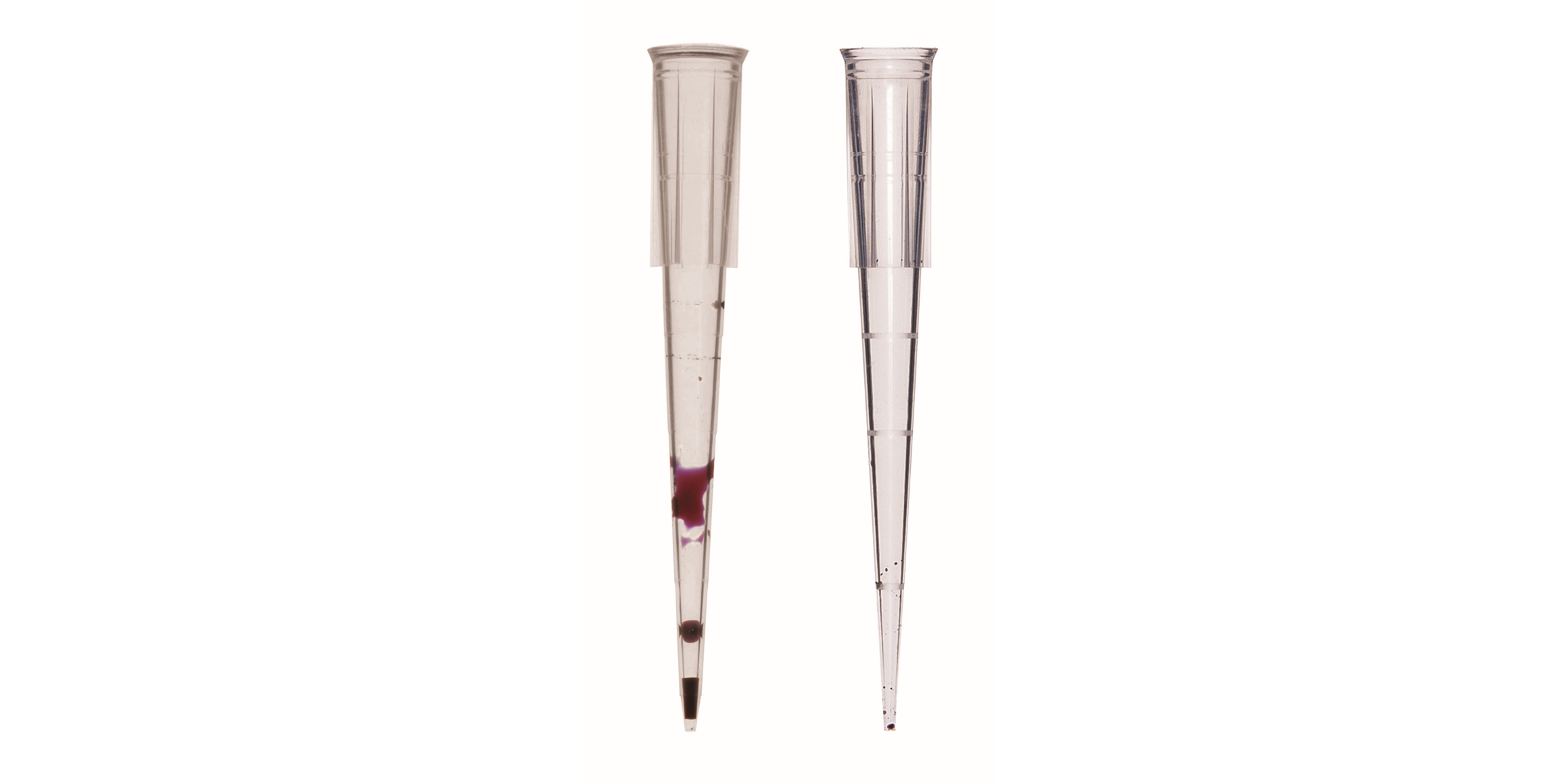What is low retention?

What is Low Retention?
Low retention refers to a specialized feature of laboratory consumables, particularly important in the molecular biology field. Consumables with a low retention design ensure a clean release of liquids, even for viscous substances like loading dye or glycerol, minimizing adhesion to the surface of the plasticware.
How Are Low Retention Consumables Manufactured?
As molecular biology techniques advanced, there was a growing demand for more precise, accurate, and sensitive experiments. With the reduction in reagent volumes and the miniaturization of lab instruments, the need for minimal volume loss became critical. The retention of reagents on plastic surfaces was recognized as a factor that could negatively impact experimental precision. To address this, many plastic consumables were coated with silicone to achieve low retention.
Silicone coating can be an effective method for clean release, but it has raised concerns about inconsistent coating application.
At SMB, we tackled this issue by selecting the ideal type of polypropylene from over 3,000 variants and developed a proprietary resin formula that balances hydrophilic and hydrophobic properties. This ensures our low retention plasticware provides a superior clean release without the inconsistencies of traditional silicone coatings.
Should I Choose Low Retention Products?
Not always—it depends on your specific needs.
Traditionally, low retention plastic consumables are considered ideal for handling nucleic acids, PCR reagents, and proteins. For plasticware applications, low retention products minimize the risk of sample loss or adhesion, which is especially important for sticky samples like proteins.
However, for liquid handling, the answer is not as straightforward.
In typical liquid handling tasks using pipettes (such as negative displacement pipettes), the vacuum effect is responsible for transferring liquids. When working with very small volumes (below 1 μL), the vacuum force is minimal, and if the pipette tip has overly strong hydrophobic properties, the liquid may not stay in the tip, leading to pipetting errors.
Thus, while low retention is beneficial for handling trace amounts of samples, it’s essential to consider the application and the products you are using.
At SMB, our low retention pipette tips are optimized for trace sample handling, but for volumes below 1 μL, we recommend considering our non-low retention tips, such as the T10CB and T10CR models.
Additionally, all trace amount samples can be safely stored in our low retention tubes to ensure no loss or absorption of your valuable samples.
What kind of products with low retention we offer?
SMB offers low retention pipette tips and microcentrifuge tubes as follows:| Bulk low retention tips | T10B, T200B, T300B, T1250B, T10SB, TN10B, TN200B, TN300B, TN1250B |
|---|---|
| Racked low retention tips | T10R, T200R, T300R, T1250R, TN10R, TN200R, TN300R, TN1250R |
| Reload low retention tips | T10RL, T200RL, T300RL, T1250RL |
| Low retention filter tips | T10F, T20F, T100F, T200F, T300F, T1250F, TN10F, TN20F, TN100F, TN200F, TN300F, TN1250F |
| Low retention microcentrifuge tubes | M0510-LRC, M1510-LRC, M2010-LRC |

